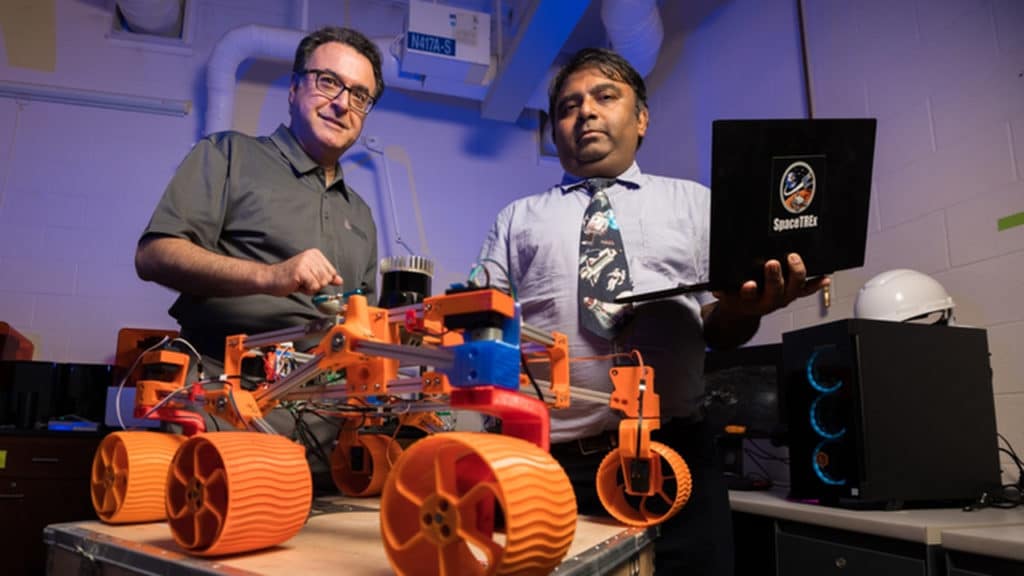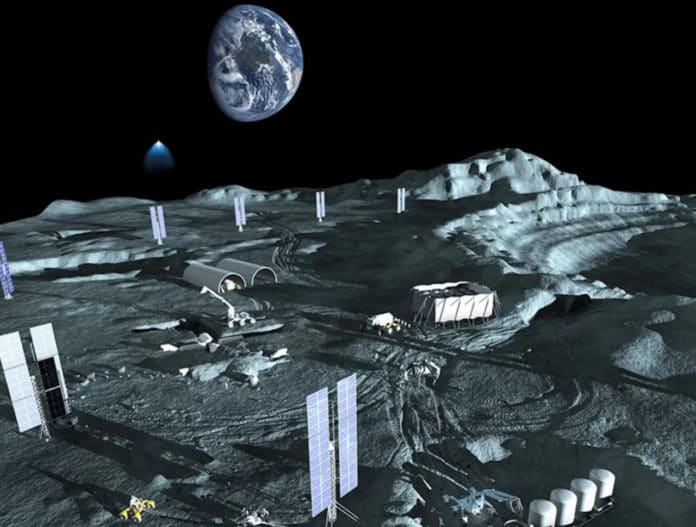As scientists began to think more seriously about building bases on celestial bodies such as the Moon, the idea of space mining is growing in popularity.
University of Arizona aerospace and mining engineers have received $500,000 in NASA funding for a new project to advance space-mining methods. The result is the development of a swarm of autonomous robots and new excavation techniques that will be able, in the future, to search for and extract metals from the lands of the Moon.
To mine for ore embedded in the rock on Earth, miners need to drill through the rock. The engineers have developed an electrochemical process to drill through rock five times faster than any other method. In addition, it combined the space mining robots with a neuromorphic learning architecture technique, called the Human and Explainable Autonomous Robotic System (HEART), which trains the robots to work together on mining, excavation, and even building tasks and improve their collaboration capabilities over time through machine learning.
The team plans to build and train the robots here on Earth, so they can hone their teamwork skills in a safer environment before going to space. Ultimately, the team aims to deploy a fully autonomous swarm of robots on the Moon that doesn’t need to receive instructions from Earth to mine materials and construct simple structures.

Earth and Moon came from a common parent body, so engineers expect their chemical compositions to be relatively similar. Mining on the Moon’s surface could greatly reduce the dependence on transporting materials from Earth to the natural satellite.
Once discovered and extracted by autonomous robots, metals could help meet the various technical and structural needs of astronauts. It could turn up rare earth metals needed for technologies such as smartphones and medical equipment, titanium for use in titanium alloys, precious metals such as gold and platinum, and helium-3 – a stable helium isotope that could fuel nuclear power plants but is extremely rare on Earth.
“In a sense, we’re like farmers. We’re breeding talent out of these creatures, or a whole family of creatures, to do certain tasks,” said Jekan Thanga, an associate professor of aerospace and mechanical engineering. “By going through this process, we help perfect these artificial creatures whose job it is to do the mining tasks.“
The researchers also believe that the swarm of robots could free up astronauts to spend more time on critical mission elements. “The idea is to have the robots build, set things up and do all the dirty, boring, dangerous stuff, so the astronauts can do the more interesting stuff,” Thanga said.
The University of Arizona aerospace and mining team is not the only one aiming to send mining robots to the Moon. In June, the American company Masten Space Systems announced the development of a Rocket Mining System called ROCKET M that uses an enclosed rocket engine and vacuum system to harvest water ice from the lunar surface.
